Those with normal hearing ability, partial hearing and non-hearing persons, can sense vibrations created by sound.
These vibrations do not need to enter through the ears, and can enter at different receptive points of the body.
Through research, we have been able to better understand the way deaf and hearing loss persons sense and perceive sound vibrations.
Deaf Musicians & Good Vibrations
Before we move onto binaural beats, to understand how hearing loss affects a persons ability to respond to musical stimuli, we can look at examples of deaf musicians.
For example, Evelyn Glennie, a deaf musician who began to lose her hearing aged 8, regularly plays barefoot with her bare feet during both live performances and studio recordings so that she can sense the vibrations of her instruments and that of the orchestra playing with her.
Her deafness does not inhibit her ability to perform at an international level. Interestingly, Glennie contends that deafness is largely misunderstood by the public. She claims to have taught herself to hear with parts of her body other than her ears (1).
Amanda Lynn Harvey is a profoundly deaf American jazz and pop singer and songwriter. She lost her hearing following an illness at the age of 18 and stands barefoot on the floor in order to feel the vibrations of her music.
Perhaps the most famous deaf musician was Beethoven. He wasn't born deaf but lost his hearing in later years. He is said to have used the vibrations felt through his piano to guide his composition.
Being able to feel vibrations is not a special gift reserved for professional musicians. All human beings have this capability.
Deaf Way II: How the Deaf & Hard of Hearing Danced to Music
This was proven en masse at Deaf Way II, an international festival hosted by Gallaudet University, Washington, D.C. in 2002.
9,675 deaf, hard of hearing, deaf-blind and hearing participants from 121 countries descended on Washington, D.C., for a week-long series of plenary sessions and concurrent workshops held at the Washington Convention Center.
Among a range of subjects covered during the conference, including advocacy and community development, economics, education, family, health and mental health and sign language and interpretation, the festival included dancing and live rock bands.
Some might find this a strange inclusion because many of the attendees were hard of hearing or deaf.
But the beats were easily followed by the deaf dancers through the vibrations of the music coursing up from their feet through their bodies. Deaf non-dancers clustered around the loudspeakers, placed their hands on the speakers, and swayed to the beat coursing through their bodies from their hands (2).
This goes to show that ears are only one way in which the body absorbs sound and vibration, and that partially deaf and deaf persons can appreciate the rhythm of music.
How Binaural Beats Affect the Hard of Hearing & Deaf
Those with hearing loss are therefore able to benefit from binaural beats: a process that entrains the brain to a specific frequency band through a process called ‘frequency following response.
The sound of the frequencies, and or the accompanying music does not need to be audible, as long as the person can sense the vibration. This is easily achieved through headphones.
In a study by conducted by The Monroe Institute, six hearing persons were studied wearing headphones over their ears and other non-ear locations of the head.
The headphones were connected to brain-mapping software while different sounds and vibrations were played through the headphones.
When non-ear locations were tested, the subjects were given earplugs to avoid sound entering the brain through the ears.
The function of the brain-mapping software was to determine if there were specific electrophysiological responses that were separate or different from the anecdotal responses of the tested individuals.
The test subjects and operators were both completely unaware as to what recording was playing at what time, and no one had the slightest idea of what to expect or what type of experience might be observed by the brain-mapping equipment.
Study Results
The study results were generated by the software and displayed on a computer screen.
Remarkably, the results showed that left-right brain synchrony could be achieved (using headphones) when placed anywhere on the head.
The most effective non-ear location was found to be slightly above or just behind the ears, approximately one inch above and slightly behind each ear. This resulted in increased feelings of relaxation and comfort.
In fact, the reports from test subjects wearing the headphones on non-ear areas around the head proved to be very interesting.
Subjects reported traveling through different mental states, experiencing vivid, bright colors; and some even said they encountered images.
This is not uncommon for those using theta or delta binaural beats, as theta can invoke a deeply meditative state, and delta a sleepy / higher state of consciousness.
After the completion of the experiment, a sign language translator–hypnotherapist suggested another placement of the headphones that might offer better levels of comfort and relaxation.
This placement was made over the neck arteries; after first identifying the pulsation of the veins and then placing the headphones over that specific area.
The subjects showed the exact same results as when the earphones were placed on non-ear areas around the head.
Proof that this was indeed due to the vibrations delivered through the nerve close to the carotid arteries was realized when the headphones moved inadvertently from their placement and the subject suddenly reported that the effects were ending and that she was returning to her usual conscious state (3).
Music is felt on a physical level by everyone. Getting a buzzing in our core when the bass is plucked or feeling the power of a drum that mimics our life force is universal. A hearing person can only try to imagine the sensations that are much more developed in a deaf person.
One can try touching the ground and placing a back against walls at shows trying to see if they can tell the difference in rhythm and the type of instrument being played by the feelings that hum along the body when the music infiltrates the molecules in in the walls and in ourselves as well (4).
In Summary: Advice for Those with Hearing Loss
It is well understood that deaf persons can be professional musicians, and that deaf persons can appreciate the rhythms of music through vibration.
The aforementioned Monroe Institute study proves that binaural beats are no exception to this and are effective even in profoundly deaf people.
This is because people with normal hearing, as well as those who are deaf, can feel the sound vibrations created by the frequencies in the music through non-ear locations, preferably and most practically one inch above or slightly behind the ear (using headphones).
In conclusion, if you are deaf or partially deaf, then you can still benefit from our special music.
If you are partially deaf in one ear and have full hearing in the other ear, you may want to continue using headphones as normal.
However, if you are partially deaf in both ears, or completely deaf, then you may want to experiment with the non-ear locations as outlined in the research detail above.

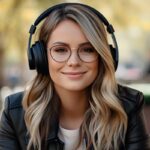
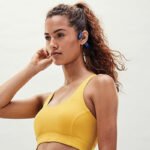
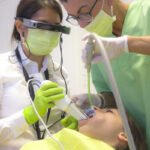
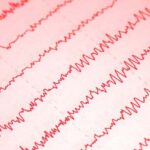
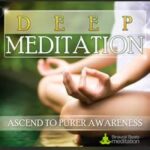
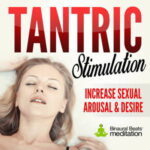
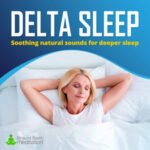
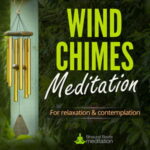

What is the reason to use headphones on ears with hearing loss in one ear, instead of non-ears areas? You don’t explain the preference. Thanks.
Hi, because if you have one full hearing ear and one partial hearing ear it should be sufficient for the process to occur naturally.
Thank you for this clarification. Helpful to know.
I have one full hearing ear and one fully deaf ear. What would you recommend I do?
You can still listen on-earusing headphones.
Thank you
You’re welcome.
hello
my 16 yr old son was diagnised of profound hearing loss in February 14 2022 ,in both ears ,he is to be offered a cochlear implant by November i would like to experiment wit binaural sounds ,what advise do you give on the best sounds to use he is currently on steroids thanks in anticipation
Hi Kamal, sorry to hear of your son’s diagnosis. You might want to start by asking the specialist you have been seeing if there is any music healing programs available on the NHS. Other than that, perhaps start with some tracks for general relaxation.
Hello.
I am a deaf I lose hearing when I was 12 years old, I finished my studies with hearing people, I am also a musician guitarist and violinist, I play more well than others, my wish and dreams is to play with those deafs musicians named in this article, I have a lot to tell and explain how deaf feels the vibration, I can play when a singer move his lips just on watching his mouth, I will be happy to receive your reply for more others information.
cordially thank you.
That’s amazing and so inspiring for others. Thank you sharing your story here.
Hello, thank you for this interesting article,
Thank you so much. Your explanation
was a relief to my problem.
You’re welcome!
I have hearing loss in my right side, can still hear some frequency my left ear has loss of some frequency , would balancing on an audio mixer help me ?
Possibly, in terms of volume. But in terms of frequency response I think you will be fine, since you will still adequately pick up the vibrations.
Can I listen through my hearing aids as opposed to headphones?
If you are able to use headphones with your hearing aids in that would be the best solution.
Should I listen through headphones or my hearing aids?
I’m glad I found this article. It’s the only one I’ve found saying that people who have hearing only in one ear can benefit from binaural beats. I have excellent hearing in my right ear and am completely deaf in my left ear. Should I listen to binaural beats by placing headphones approximately one inch above and slightly behind each ear as described in this article, or should I place the headphones on each ear, or should I go about this a different way? What is the most effective method?
Hi Leigh, the reason people might say otherwise is that they aren’t aware that sound frequencies are vibration and are felt as well as heard. There are deaf musicians who play through the feel of vibration. Lower frequencies in particular have high level vibration, which binaural beats frequencies tend to be. So as long as the vibration from the left and right signals (through headphones) is perceived you will still benefit. You can put the ear bud in your left ear, or if you wear over-ear headphones you can place the cup slightly above or behind, it’s really up to you.
Thank you for the article.
I do not have the hearing aids. One my ear profoundly deaf (on bone level), so I can not use my scull bones.
I’ll try to experiment with the non-ear-head locations: carotid arteries on the neck or just hold one ear piece of the headphone in hand.
You’re welcome. Please let us know how you get on.